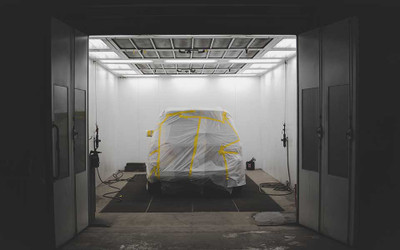How to Paint Plastic Car Parts
Posted by Joshlin Grayson on May 12th 2020
Back in the 60s when the muscle car was in its prime, you’d be hard-pressed to find a plastic part on a car, unless you ventured inside. Even then, good luck finding a plastic part that needed anything more than a coat of Armor All®. However, as time progressed and fuel economy regulations tightened, vehicle manufacturers started ditching heavy metal parts for lightweight steels, and plastics in efforts to save weight and improve fuel economy. Though plastic parts are undetectable with the proper paint job, they require special care when painting them to ensure they blend and match the quality of their metal counterparts. Painting plastic car parts is a simple, four-step process that, if done correctly, can leave your plastic components indistinguishable from your metal parts, and keep your car looking its best for years to come.
Step 1 - Remove the Part
If possible, remove the plastic parts that you wish to paint from the vehicle. Removing the parts allows you to thoroughly clean and prep the part for paint, and also prevents paint seams. If you cannot remove the part, thoroughly mask the area around the part to prevent overspray.
Step 2 - Get it Clean
Thoroughly wash the plastic auto part with car wash detergent, ensuring that all dirt and debris is removed. Rise the part with water and allow it to completely dry. Once the part has dried, wipe the part with rubbing alcohol to remove any residue left from the detergent, and use a lint-free towel to wipe the part with a wax and grease remover. This step ensures that your paint properly adheres to the plastic.
Step 3 - Prep for Paint
Use 800-grit sandpaper and water to smooth the part and prep it for paint. Make sure that your sandpaper does not dry out during this step, but instead stays soaking wet to prevent dust building up under the sandpaper and scratching your part as you sand. Once you’ve finished sanding the part, rise it with water and allow it dry.
Step 4 - Make It Stick
Because plastic is not porous, paint can sometimes run, slide, or bubble as you apply it. To prevent this, apply an adhesion promoter so that your primer and paint adhere to it. Your adhesion promoter should be applied just as you would with your paint or primer--with light, even coats.
Step 5 -Its Paint and Prime Time!
Prime your plastic car part with thin two coats of primer, allowing each coat to completely dry before applying the next. Next, spray three thin and even coats of paint on your part, ensuring even coverage. Once your paint has dried, spray two layers of clear coat, and allow the plastic part to dry at least 24 hours.
Pro Tip: Remember when applying coats of paint, primer, and clear coat, to always spray more than eight inches away to promote a more even coat. Spraying too close can cause the paint to layer or coat the part unevenly.
Once your part has tried more than 12 hours, it’s ready to install! If you want to add a brilliant shine to your part, you can use a high-gloss polish for that showroom finish.


